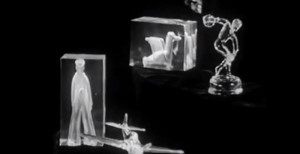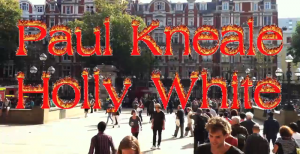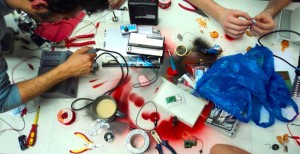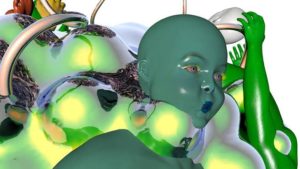At the entrance of No one lives here, the latest exhibition by MA Curating students from the Royal College of Art, is a research display focused on the Pionen White Mountain Data Centre based near Stockholm, Sweden. Three-dimensional renderings, alongside a short film, show how unique this converted bunker space appears, juxtaposed as it is with plants, geometric glass offices and whirring computer servers. It’s everything a James Bond villain could wish for and as the architect Albert France-Lanord explains in an interview, deliberately so. Its over-sized doors made to look secure, its sci-fi aesthetic designed to draw clients in closer to a vision of the future.

An aim clearly pursued by the 14 student-curators working on No one lives here is the representation of almost every digital format across the show. Raphael Hefti’s ‘Subtraction as Addition’ is a tinted-glass sculpture mirroring us into a virtual screen, S Mark Gubb’s poignant GIF-like video, ‘Drowning Dog’, shows a dogs attempts at helping another of its kind and Jack Strange makes clever use of a classic white Apple laptop-as-readymade in ‘g’, a piece about information overload where said letter is typed on page after page of a Word document.
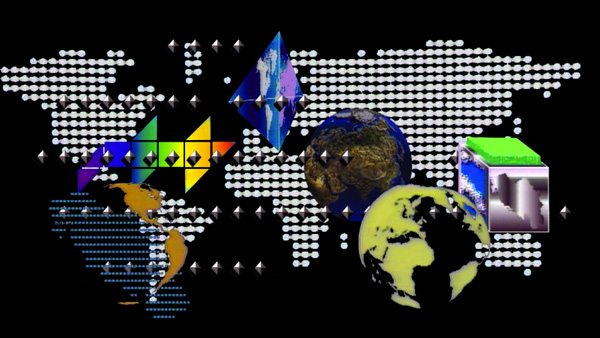
Conscious of the non-hierarchal nature of the Internet, the curators have also made an effort to re-create this sense within their exhibition space. At times artists’ works are levelled, at others juxtaposed, as is the case with Hito Steyerl’s film ‘Strike’, which is installed on one side of a diagonal wall, where a TV is struck, and ‘Strike II’ on the other, where the spectator becomes the subject of that attack. Just next to Steyeri’s piece is Neïl Beloufa’s impressive sculptural video installation ‘Nice seats and projection’ – Peoples passion, lifestyle, beautiful wine, gigantic glass towers, all surrounded by water’. It serves as a work of particular merit as a work that makes sly use of utopia as metaphor for web users’ ideal social network.
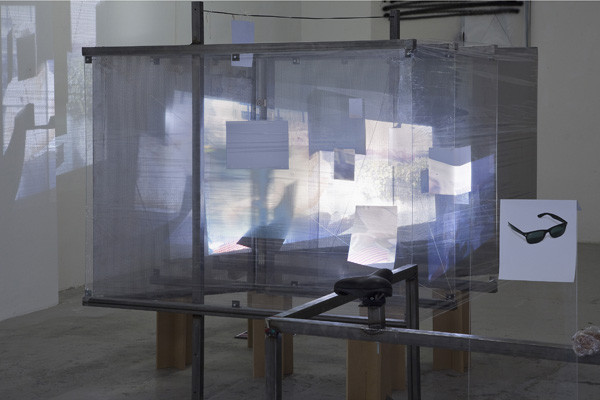
A shortcoming of No one lives here, however, is the exhibition quickly begins to feel more like a museum of outmoded formats than an avant-garde display of contemporary art. A prime example being the display of Mosireen Collective’s citizen journalism on dusty old monitors. An incredibly strong narrative about the state of Cairo’s health care system and a visible demonstration of Youtube’s power to give independent voices millions of hits is de-contextualised, transferred offline, and often made unintelligible, formatted as it is from a rectangular screen to a square one with subtitles left cut off.
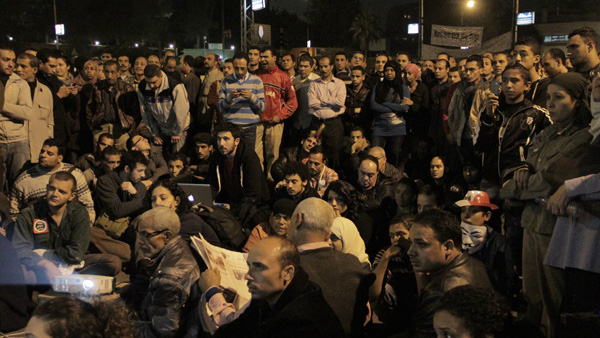
No one lives here takes its title from the theorist and philosopher Gayatri Spivak’s text, Death of a Discipline, where she argues “the globe represents interconnectedness, a utopian idea in which all individuals are complicit and connected, aided by technology”. Here, in contrast to the the work of Mosireen Collective, many of the other narratives seem disconnected, even disparate, with a tired Internet aesthetic. It’s a problem that, perhaps, all physical exhibitions focused on digital culture will encounter; forever outmoded by its relentless counterpart.

